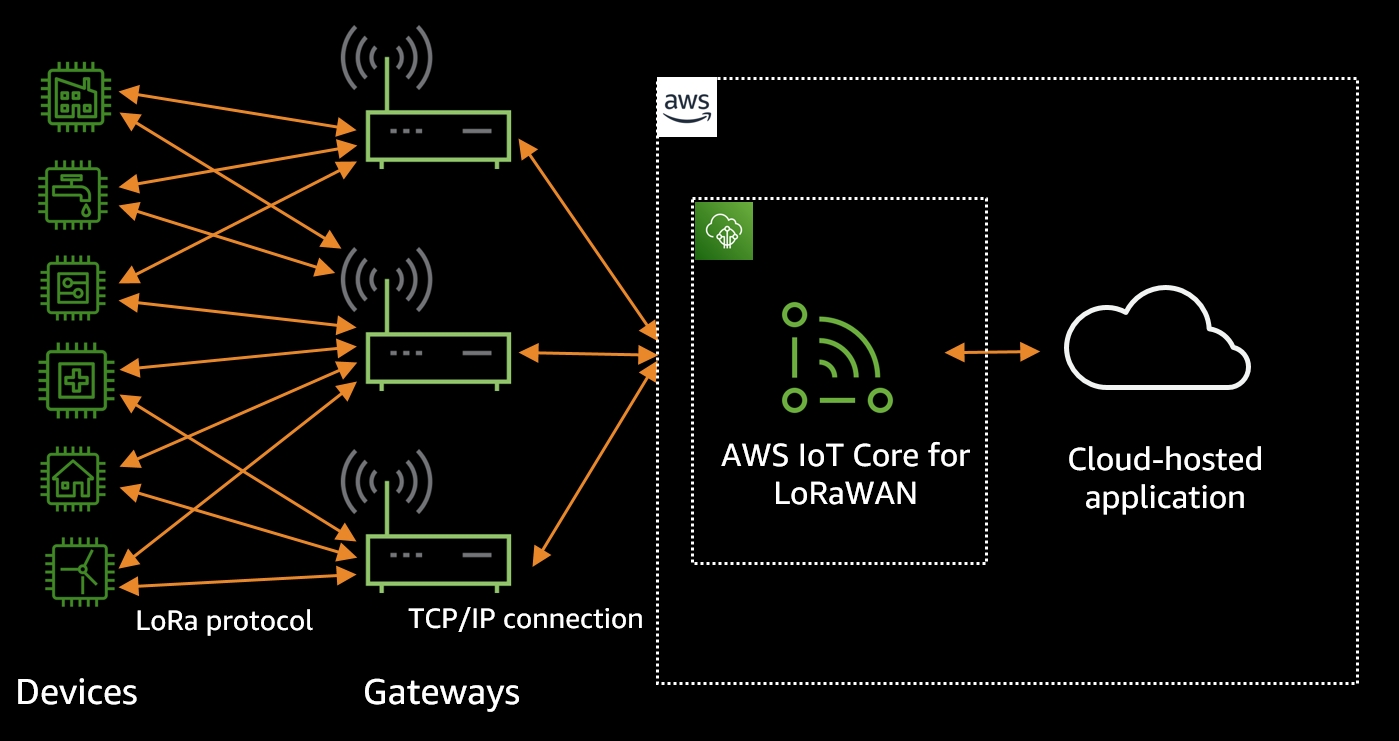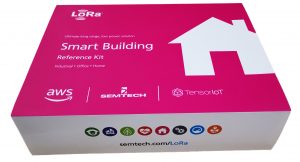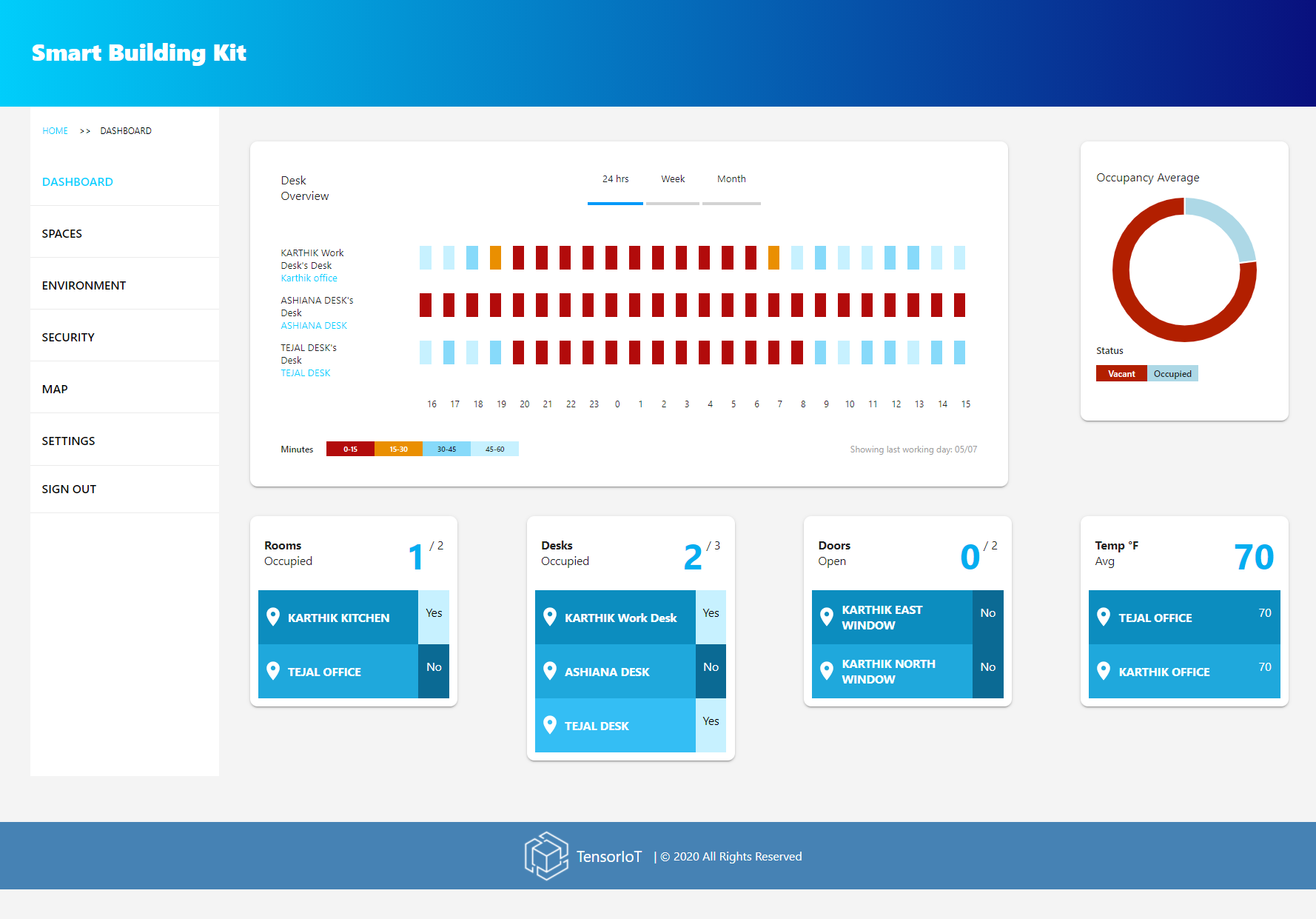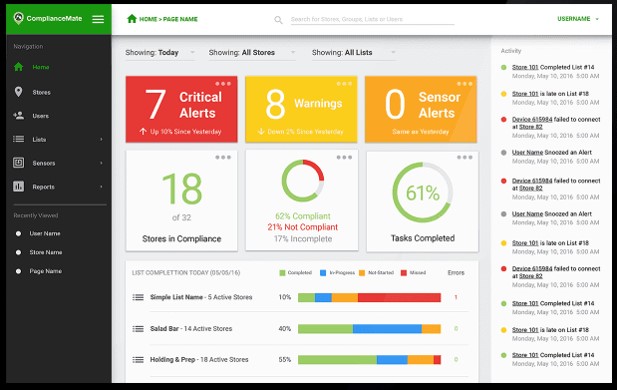The Internet of Things on AWS – Official Blog
Introducing AWS IoT Core for LoRaWAN
Many IoT devices rely on Low-Power Wide-Area Networks (LPWAN) to connect their fleets. Wi-Fi, Bluetooth, or wired Ethernet serve an important role in providing connectivity, but these connections have limited range. Cellular connectivity may require expensive monthly service fees which can consume high power and limits the battery life of small, low-bandwidth sensors or devices. It is common for many enterprises to develop IoT applications using devices that transmit data over long range (1-3 miles urban coverage or up to 10 miles with line of sight) or through the walls and floors of buildings. These applications may be used for real-time asset tracking at airports, remote temperature monitoring in buildings, or predictive maintenance of industrial equipment. Such applications also require devices to be optimized for low-power consumption, so that batteries can last several years without replacement, making the implementation cost-effective. Low-power, wide-area networks like LoRaWAN address many of these challenges and give customers a way to connect their devices over a long distance while consuming small amounts of power which is why we built AWS IoT Core for LoRaWAN. In this post, you will learn about the feature benefits, the Partner community, real-world customer use cases, and how to get started using AWS IoT Core for LoRaWAN in your own IoT solution.
Announcing AWS IoT Core for LoRaWAN
AWS IoT Core for LoRaWAN is a fully-managed feature that allows you to connect and manage wireless devices that use LoRaWAN connectivity with the AWS Cloud. Using AWS IoT Core for LoRaWAN, enterprises can setup a private LoRaWAN network by connecting their LoRaWAN devices and gateways to the AWS Cloud – without developing or operating a Network Server (NS) for LoRaWAN themselves. This eliminates the undifferentiated work and operational burden of managing an NS, and enables you to easily and quickly connect and secure LoRaWAN device fleets at scale. Combined with the long range and deep in-building coverage provided by LoRaWAN, AWS IoT Core for LoRaWAN enables enterprises to accelerate IoT application development by acting on the data generated from connected LoRaWAN devices using AWS services.
“The rapid acceleration of growth in both private and public LoRaWAN networks has been key in the expansion of LoRaWAN deployments worldwide. AWS’ launch of AWS IoT Core for LoRaWAN offers an innovative solution to accelerate private network deployments by offering a simple, reliable, cloud-based method that allows customers to easily and cost-effectively deploy private LoRaWAN networks. It is always exciting to see new products and business models entering the market that strengthen the community for LoRaWAN. I congratulate AWS on this achievement,” said Donna Moore, CEO and Chairwoman of the LoRa Alliance.
One of the key challenges for enterprises interested in using LoRaWAN is operating an NS as part of a privately managed network. An NS is required to manage LoRaWAN device and gateway connections. LoRaWAN gateways serve as a bridge between the LoRa devices and the NS in the cloud. Today, enterprise network engineers have two options; either operate an in-house NS, or use a commercially managed NS service. When operating in-house, engineers invest in custom development work starting with an open-source or licensed NS software and combining it with multiple AWS services, which is time-consuming and distracts from core business goals. It also incurs the operational overhead of managing the associated infrastructure and providing technical assistance to internal teams building applications. Alternatively, when using commercially managed NS services, customers find the accompanying up front license or subscription-based bundle pricing costly to operate. Lastly, network engineers also need to make it easy for developers in their company to deliver business applications and solutions with the data collected from connected devices.
AWS IoT Core for LoRaWAN enables network engineers to connect LoRaWAN devices and gateways to the cloud with a few simple steps in the AWS IoT console, thus speeding up the network setup time. With AWS IoT Core for LoRaWAN, you can ingest data and immediately act on that data to perform common actions such as converting data formats, sending data into Amazon DynamoDB, or invoking any number of other AWS services required to drive business outcomes.

Using AWS IoT Core for LoRaWAN, engineers can connect off-the-shelf LoRaWAN devices without the need to modify embedded software for a plug-and-play experience. To further reduce onboarding friction, AWS IoT Core for LoRaWAN includes support for the open-source LoRaWAN gateway-to-NS communication protocol called LoRa Basics™ Station from Semtech. Support for LoRa Basics Station means engineers can avoid rewriting or testing custom gateway software to securely connect LoRaWAN gateways to AWS IoT Core. Additionally, AWS’ gateway qualification program for LoRaWAN enables engineers to source gateways from AWS Partners that are pre-configured with LoRa Basics Station and are ready to connect with AWS IoT Core.
Once LoRaWAN devices and gateways are connected, developers can take advantage of all of the features of AWS IoT. A common example might be to use the AWS IoT Core Rules Engine to write simple SQL queries to transform and act on the device data, like converting data from proprietary binary to JSON format, raising alerts, or routing it to other AWS services, like Amazon S3. From the AWS IoT console, engineers can also query metrics for connected devices and gateways to troubleshoot connectivity issues. With pay-as-you-go pricing and no monthly commitments, enterprises can connect and scale their LoRaWAN device fleets reliably, and build applications with AWS services quickly and efficiently.
“Semtech’s LoRa is a proven IoT solution that supports a long range, low power wide area network (LPWAN) platform and meets AWS IoT Core’s goal of enabling rapid, simple, cost-effective creation of private LoRaWAN networks. We are pleased to have collaborated with AWS on the use of LoRa as the next generation, Enterprise technology for modern Cloud-based IoT networks,” said Alistair Fulton, Vice President and General Manager in Semtech’s Wireless Sensing Products Group.
Partner community of gateways and System Integrators
To get you started quickly with AWS IoT Core for LoRaWAN, we have worked with leading gateway manufacturers and System Integrators (SI) that offer qualified hardware and consulting services.
We collaborated with leading gateway manufacturers including Browan, Kerlink, Laird Connectivity, MultiTech, and TEKTELIC to qualify their hardware for AWS IoT Core for LoRaWAN. The AWS IoT Device Qualification Program (DQP) is designed to help you find hardware that is compatible with a variety of AWS services. For AWS IoT Core for LoRaWAN, the DQP involves partners integrating LoRa Basics Station into their gateway hardware, which goes through rigorous testing by both AWS and the partner to ensure a robust and secure implementation for customers. Once qualified, the gateway is listed into the AWS Partner Device Catalog where you can filter, browse, and find the most appropriate hardware for their particular use case. A subset of these partners are also offering AWS IoT Core for LoRaWAN Developer Starter Kits which includes a gateway, a sensor, and a getting started guide. The guide includes step-by-step instructions for how to use the AWS IoT Console and partner gateway console to connect the LoRaWAN device and gateway, and build a simple application using AWS services such as using the Amazon Simple Notification Service (SNS) to send an SMS notification or Amazon Quicksight to visualize data from LoRaWAN devices in a dashboard.
To enable you to build a product based on AWS IoT Core for LoRaWAN, we worked with three leading System Integrators: Klika-Tech, TensorIoT, and Leverege. All three SIs were part of the beta program for AWS IoT Core for LoRaWAN and are very familiar with how the feature works, how to connect gateways, how to ingest data from sensors, and how to build an application using AWS IoT. These SIs offer design and integration engineering services to help you quickly build end-to-end applications on AWS that utilize AWS IoT Core for LoRaWAN.
Finally, we also collaborated with TensorIoT and Semtech to create two LoRaWAN Solution Starter Kits. Targeted at customers who want to quickly deploy sensors and build a proof of concept (PoC) using AWS IoT Core for LoRaWAN, Solution Starter kits provide a cloud-hosted dashboard using AWS IoT Core under the hood. The Smart Building Kit which contains a variety of sensors from Browan Communications including temperature, humidity, leak detection, desk and room occupancy, and people counting. The kit includes the required LoRaWAN gateways and a Wi-Fi hotspot. The Asset Tracking Kit includes an outdoor-rated LoRaWAN gateway together with six industrial trackers, also from Browan. The kit enables you connect trackers and track the assets on a map provided in a cloud dashboard. These kits are available for immediate purchase on Mouser, Digi-Key, and Amazon.com.



“With AWS IoT Core, we have simplified how IoT devices connect and interact with cloud applications with support for MQTT, HTTP and WebSockets protocols,” said Dirk Didascalou, Vice President, IoT, Amazon Web Services. “But customers have told us they are looking for wireless connectivity choices that meet the low-power, long-range application needs when setting up connectivity for applications such as asset tracking, industrial equipment maintenance, and building automation. That’s why we built support for AWS IoT Core for LoRaWAN enabling customers to connect, scale, and manage LoRaWAN device fleets directly to AWS. We’re excited to bring the benefits of simplified LoRaWAN connectivity and IoT application development to enterprises of all sizes.”
AWS IoT Core for LoRaWAN food safety customer use cases
Most restaurants use notebooks and clipboards for compliance checks. Compliance Mate is changing that. Compliance Mate offers a solution to address a critical need for proactive food safety at restaurants. Too many hospitality brands operate without a comprehensive temperature monitoring and Hazard Analysis Critical Control Point (HACCP) compliance system. As a result, they’re putting guests at risk every day. They’re also forfeiting a major opportunity to keep staff accountable, reduce food waste, and maintain brand integrity.

Through a combination of wireless temperature sensors, mobile technologies, and easy-to-use tools built for the modern kitchen, Compliance Mate gives their customers total control over food safety and compliance at their stores. With real-time access to temperature data, customers can quickly identify operational deficiencies and prevent food safety mishaps before they occur. They can also make evidence-based decisions about kitchen processes and staff training.
Compliance Mate is using AWS IoT Core for LoRaWAN to connect temperature sensors in restaurant refrigeration and freezer units—these cold climate sensors being devices that leverage a low-power, long-range wide area network. The LoRaWAN devices can penetrate the thick walls of refrigeration units and can last for years without replacement thanks to their low power consumption which reduces their operating costs. Using AWS IoT Core for LoRaWAN allows them to more easily meet their end customer goal of ensuring customer food safety while reducing the risk of food perishing.

“We built a turn-key monitoring solution which includes providing LoRa hardware and a cloud application to serve large chains like Chick-fil-A, Shake Shack, and Five Guys. We already have a LoRaWAN implementation in production for which we had to build a custom network backend. AWS IoT Core for LoRaWAN provides us a great incentive to get out of managing that infrastructure and focus on improving the experience of our customers,” says Adam Parrott, CTO, Compliance Mate.

Getting started
To get started with AWS IoT Core for LoRaWAN, you can find and select a Developer Starter Kit from the AWS Partner Device Catalog that includes both a gateway and a sensor. Follow instructions provided in the Getting Started Guide that comes with the kit will walk you through creating certificates and keys unique to your gateways and how to provision those credentials onto your specific gateway. Once that’s completed, you input device credentials (identifiers and security keys provided by the device vendor) on the AWS IoT console and follow guided defaults for specifying device configuration to provision devices. Devices can then join the network and you can see up-link packets coming into the AWS IoT Rules Engine. Then you will provision the sensor and finally use the data from the sensor to take some action such as sending the data to Amazon DynamoDB.
AWS IoT Core for LoRaWAN is available immediately in two Regions: US East (Northern Virginia) and EU (Ireland).
To learn more, visit AWS IoT Core for LoRaWAN.
LoRaWAN is a mark used under license from the LoRa Alliance.
About the authors

Adrian Valenzuela is a Senior IoT Go-To-Market Specialist at Amazon Web Services and is based in Dallas, Texas. Adrian is responsible for business development for the AWS IoT Connectivity & Control services and is maniacally focused on working with customers to develop innovative technology regardless of size, industry, or location. Adrian has nearly two decades of experience work in tech – from ultra-low power microcontrollers, microprocessors, and now cloud solutions for embedded devices.
 Karthik Ranjan joined Amazon in October of 2018. Based in Seattle, Karthik is responsible for driving the LoRaWAN ecosystem strategy for AWS IoT. Prior to this Karthik spent 8 years at Arm where he lead the healthcare segment team focused on the creation of health IoT gateways and drove industry standardization around onboarding data from health IoT endpoints. Karthik was named in the list of the Top 100 influencers leaders in Health Tech by Hotwire. Before that Karthik led Arm’s global carrier relationship team. Karthik has more than 20 years’ experience working in the consumer electronics industry with companies such as Intel, Microsoft, and Amino. Throughout his career, he has been instrumental in driving standardization efforts around emerging broadband technologies including DLNA, g.lite & DOCSIS, and major IPTV deployments.
Karthik Ranjan joined Amazon in October of 2018. Based in Seattle, Karthik is responsible for driving the LoRaWAN ecosystem strategy for AWS IoT. Prior to this Karthik spent 8 years at Arm where he lead the healthcare segment team focused on the creation of health IoT gateways and drove industry standardization around onboarding data from health IoT endpoints. Karthik was named in the list of the Top 100 influencers leaders in Health Tech by Hotwire. Before that Karthik led Arm’s global carrier relationship team. Karthik has more than 20 years’ experience working in the consumer electronics industry with companies such as Intel, Microsoft, and Amino. Throughout his career, he has been instrumental in driving standardization efforts around emerging broadband technologies including DLNA, g.lite & DOCSIS, and major IPTV deployments.